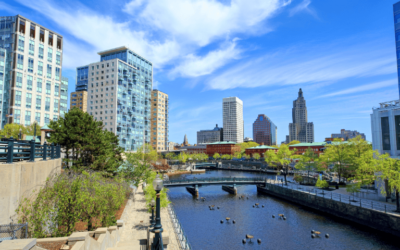The HUD GRRP Comprehensive cohort focuses on properties with a greater need for energy efficiency and climate resilience improvements. The Green and Resilient Retrofit Program works with HUD-supported owners to reduce carbon emissions, improve energy efficiency, transition to renewable and sustainable energy sources, and improve the facility’s resistance to climate hazards.
Key Takeaways
The GRRP Comprehensive cohort funds retrofits that focus on climate resiliency, reducing carbon emissions, improving energy efficiency, and initiating the generation of renewable energy. The program is available to owners of HUD-assisted properties regardless of their experience with green construction projects. The projects will be developed with guidance from a HUD-approved contractor who will provide assessments and create an effective transaction plan.
Property owners can submit their applications at four different times throughout 2023 and 2024.
- August 2023
- November 2023
- February 2024
- May 2024
What Does GRRP Comprehensive Cohort Funding Cover
The GRRP provides up to $20 million per property or $80k per unit. The funding covers the costs associated with greener or more resilient components. For example, replacing a standard boiler with an energy-efficient heat exchange.
Awards from the GRRP can cover up to 30% of the transactional costs necessary to complete the retrofit. Up to 50% of the award is reserved to cover costs associated with utility efficiency, carbon reduction, renewable energy sources (solar or wind power), and climate resiliency projects.
Did you know there are multiple funding programs under the HUD GRRP Program? If one program does not fit your needs one of the other might. Try reading our blog, A Basic Overview of the HUD GRRP Program.
What is the Property Owner Responsible for Covering
Property owners are responsible for part of the retrofit costs using their capital or funding from private and public funds. These expenses include the following,
- Replacing broken or outdated building components
- Purchasing Energy Star and WaterSense products, along with LED lighting fixtures.
- The base cost of GRRP-approved green-alternative items. For example, boiler costs to accommodate heat exchangers.
- Any rehab components included beyond the HUD recommendations.
Understanding the Application Process
Eligibility: HUD-supported multifamily properties in need of an energy-efficient rehab. A complete list can be found in Section 3 of the Comprehensive NOFO.
Selection: Properties are ranked on their utility efficiency needs using the EPA’s Energy Star score or the Multifamily Building Efficiency Screen Tool (MBEST). Climate vulnerability is measured by FEMA’s National Risk Index. At least 60% of the funding is reserved for properties that benchmark via a Portfolio Manager. The remaining funding will be awarded to property owners using MBEST.
Submission: The following must be included in the GRRP application.
- Property information
- Portfolio Manager Statement of Energy Performance with utility data or an MBEST form for each building on the property
To help offset benchmarking costs in Portfolio Manager, HUD will reimburse property owners up to $2,500.
Program Requirements
Some key GRRP requirements include the following.
- Property owners must work with a HUD-approved and provided contractor throughout the project
- Commit to an estimated energy usage savings of at least 25%
- Ensure residents’ needs are being addressed
- Extend the property’s commitment to affordably by at least 5 years with the goal of up to 25 years
During the retrofit project, property owners must comply with
- Build America, Buy America requirements
- Comply with Davis-Bacon wage rates for construction workers
- Meet Section 3 employment requirements
- Complete post-rehab benchmarking
You can find a list of property owner requirements in Housing Notice H 2023=05.
Examples of Comprehensive Cohort Funding
An apartment complex is using gas-powered equipment and faces an increasing risk of wildfires and drought. Comprehensive cohort funding is helping the property owner replace gas-powered equipment with electric. It is also providing funding for solar panels, products to minimize water usage, and the installation of fireproof shingles.
Another example is a property owner planning a tax credit-financed renovation at a low-income housing complex to address energy efficiency and minimize the risk of wind damage. The owner is experiencing a gap in funding and GRRP is helping to support their climate resiliency and green projects.
Funding Management from Incentive Rebate360
To learn more about GRRP Comprehensive Cohort Funding, click here to watch a short, informative video. Incentive Rebate360 has experienced rebate recovery specialists that can assist in answering any of your questions along with managing your incentive returns.
To learn more about these HUD GRRP programs contact us today. Call 480-653-8180, email [email protected], or schedule a call that fits your needs by clicking the button below.






0 Comments